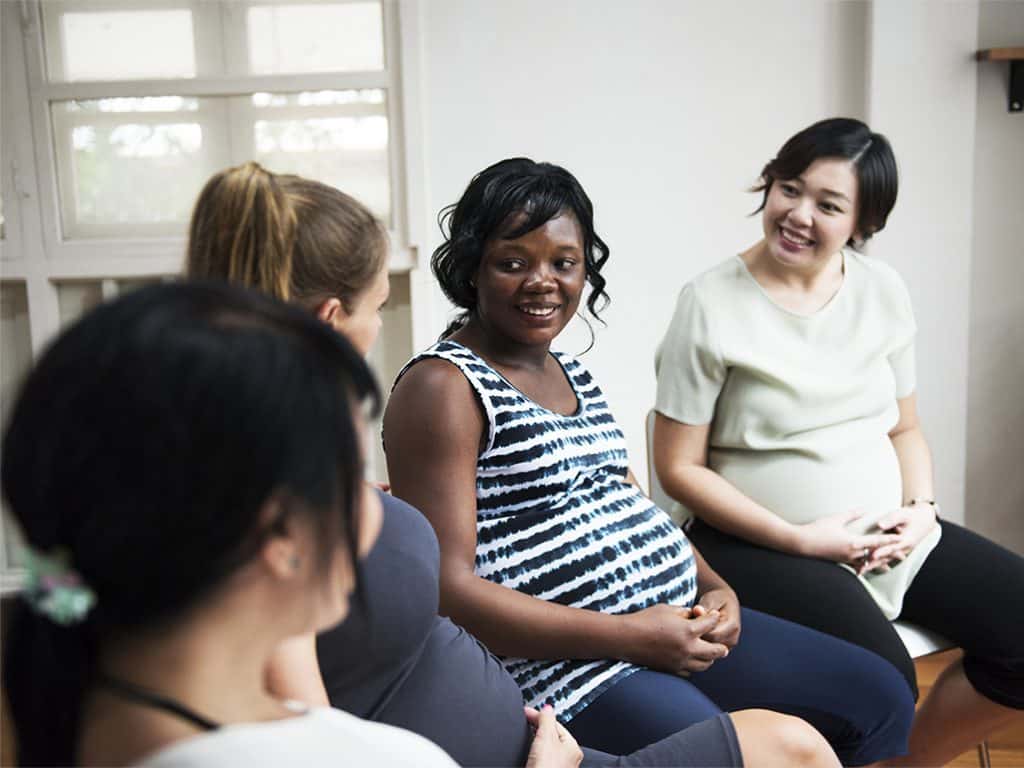One of the most important parts of pregnancy is participating in a birthing class. The class not only helps to reduce many of the usual fears associated with the birth of a child but also helps to develop a solid, structured birth plan. Although there are many different types of antenatal classes, the core subjects remain the same (e.g. delivery methods, breastfeeding, managing pain, baby care, etc.).
Birthing classes are offered both personally and online. If you are interested in finding birthing classes online, it is advisable to book a birthing coach/class who is experienced, knowledgeable, and within your price range. Apart from the obvious educational aspects of antenatal classes, another major benefit they offer the mother is emotional support, and you will also be able to interact with other parents and expectant mothers.
Birthing classes, whether online or at your local community college, can give you the confidence you need in these difficult times. Use the tips in the following section to learn how to choose the best birthing classes for your particular needs. If one of the topics in the following sections is not included in your birthing class, you should find another class that offers these topics.
The Different Types of Classes
There are different types of birthing classes and birth techniques. Most hospitals and health centers offer some kind of basic birthing classes that meet the needs of many expectant mothers.
These basic courses can last from a few weeks to a few months. Courses in this style usually cover birth techniques, cesarean-sections, pain management, and other general topics. There are also online birthing courses that you can take at any time with your coach. Below we describe some of the more common birth techniques that are currently in use.
Note: An important note here is that the majority of health insurance companies do not cover birthing classes. It would, therefore, be advisable to consider this before choosing a class.
Type of Birthing Techniques:

1. Lamaze
The Lamaze technique was invented over 50 years ago and has been very popular ever since. One of the more recognizable aspects of the Lamaze technique is its focus on breathing. The idea behind the focus on breathing is to distract the mother’s attention/focus from her contraction pain.
The original goal of the Lamaze method was to make the mother as comfortable as possible during the birth so that she would completely avoid taking any drugs. However, many women who use the Lamaze method also take medication during pregnancy.
2. Hypnotic Birthing
Hypnotic birthing (also known as “hypnobirthing” and sometimes called the “Mongan Technique”) uses self-hypnosis to put the mother into a calm state before and during the birth process.
Most hypnobirthing courses are taught over a duration of five lessons. Each lesson takes about two to three hours. The actual content of the lessons focuses on muscle contractions, the mind-body connection and how to achieve a completely relaxed body/mind during the birth process.
3. Bradley
The Bradley Birth Method is a technique taught over a period of three months. The lessons are designed to cover every aspect of the birth process and pregnancy in general in detail. In the Bradley technique, the mother’s partner is used to provide personal guidance for the mother. These “birth partners” are encouraged from the sidelines into the action with the Bradley method.
4. Breastfeeding

One of the most common topics covered in most (though certainly not all) prenatal classes is breastfeeding. This is a particularly important topic when the mother is pregnant for the first time. Breastfeeding has been shown to have numerous benefits for both mother and child and is considered an important part of infant care.
Most doctors recommend breastfeeding until the mother and child feel that breastfeeding is no longer necessary. Most mothers stop breastfeeding after about a year.
General Medical Knowledge & First Aid
One of the most important aspects of any birthing course is general first aid (including CPR). Imagine you are a first-time mother and don’t know how to take care of your child when he or she gets hurt? That would be a nightmare. For this reason, these topics are covered in most prenatal courses.
Be sure to check with your obstetrician/class teacher to see if these topics are covered or not. Knowing how to perform CPR or give basic first aid can sometimes mean the difference between life and death.





